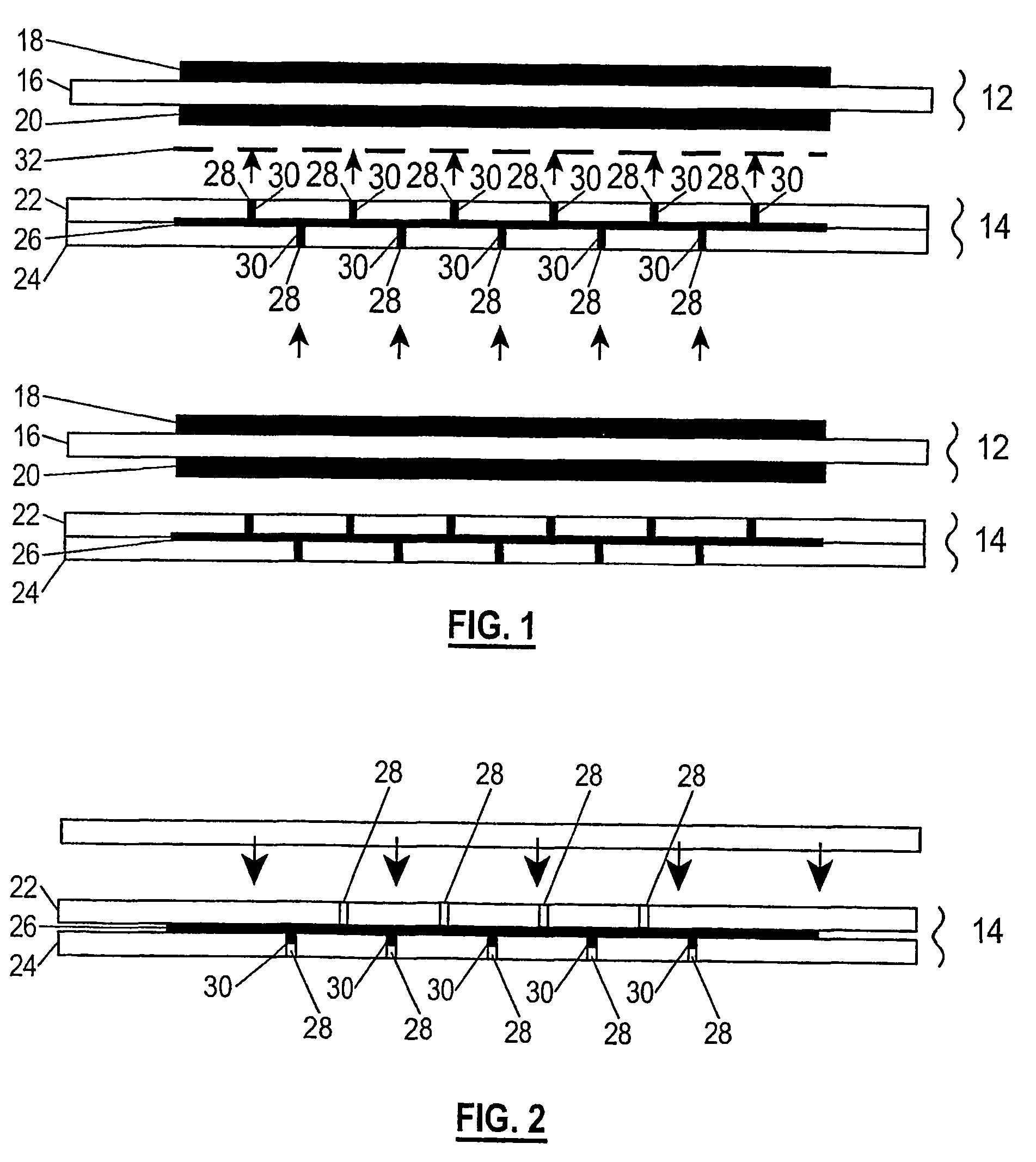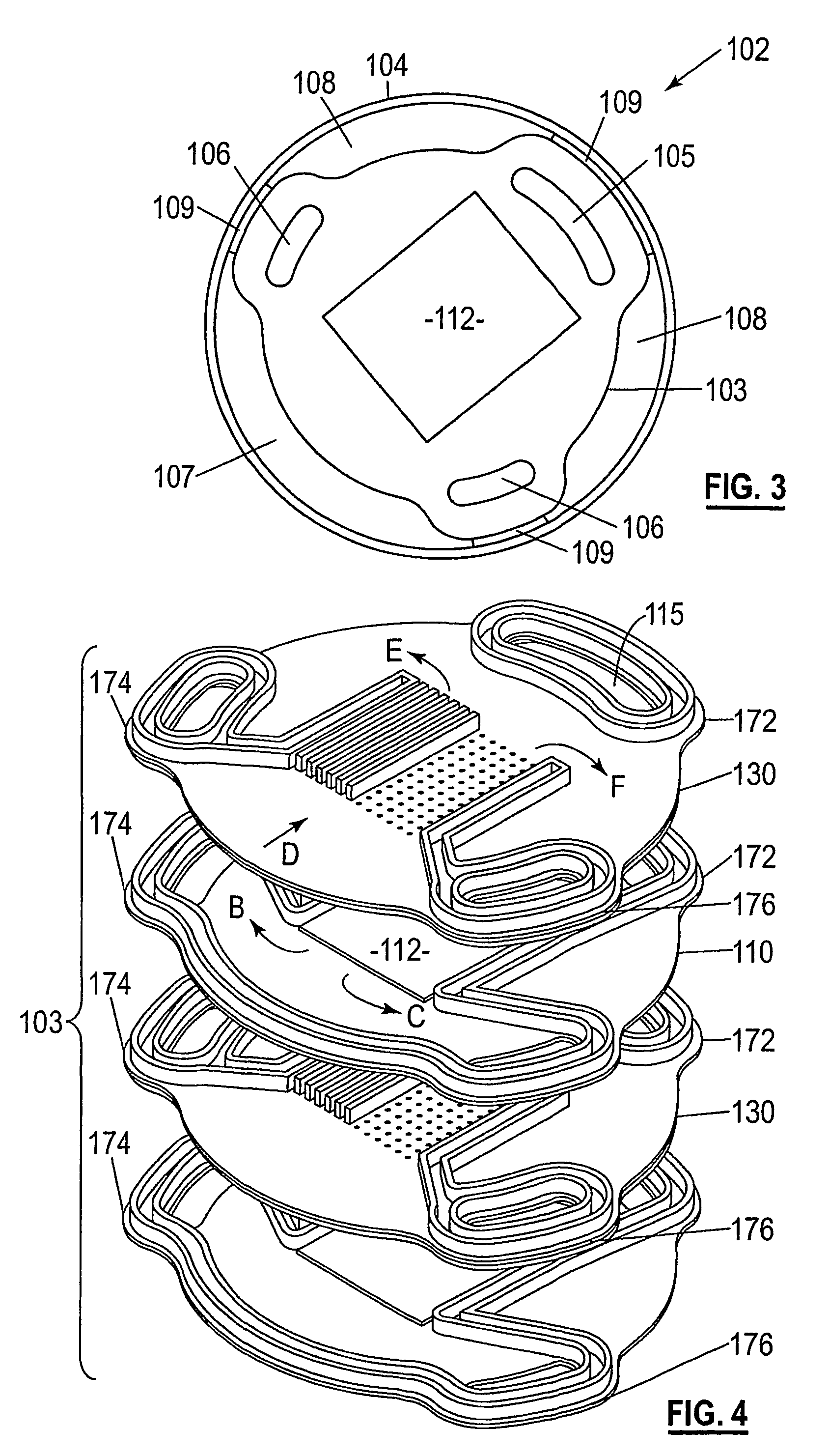Fuel cell gas separator plate with paths of electrically conductive material of a silver-glass composite
a technology of silver glass composite and gas separator plate, which is applied in the field of fuel cells to achieve the effects of enhancing electrical contacts, reducing loss of silver glass composite, and reducing loss of glass
- Summary
- Abstract
- Description
- Claims
- Application Information
AI Technical Summary
Benefits of technology
Problems solved by technology
Method used
Image
Examples
Embodiment Construction
[0064]Referring to FIG. 1 there is shown an array 10 of alternating fuel cells 12 and gas separator plates 14 in accordance with the invention. The fuel cells 12 are planar and comprise a solid oxide electrolyte support layer 16 with an anode layer 18 on one side and a cathode layer 20 on the other side. The electrolyte is preferably yttria-stabilized zirconia such as 3Y, 8Y or 10Y. The anode is preferably a nickel-zirconia cermet and the cathode is preferably a conductive perovskite such as lanthanum strontium manganate. Such solid oxide fuel cells are well known and will not be described further.
[0065]Each gas separator plate 14 has a three-layer sandwich structure with first and second outer layers 22 and 24, and a third intermediate layer 26.
[0066]The first and second layers are conveniently formed of a zirconia to substantially match the CTE of the electrolyte support layer 16 of the fuel cells 12. The zirconia may be yttria-stabilized, but could be, for example, an alumina-add...
PUM
| Property | Measurement | Unit |
|---|---|---|
| thickness | aaaaa | aaaaa |
| thickness | aaaaa | aaaaa |
| temperatures | aaaaa | aaaaa |
Abstract
Description
Claims
Application Information
 Login to View More
Login to View More - R&D
- Intellectual Property
- Life Sciences
- Materials
- Tech Scout
- Unparalleled Data Quality
- Higher Quality Content
- 60% Fewer Hallucinations
Browse by: Latest US Patents, China's latest patents, Technical Efficacy Thesaurus, Application Domain, Technology Topic, Popular Technical Reports.
© 2025 PatSnap. All rights reserved.Legal|Privacy policy|Modern Slavery Act Transparency Statement|Sitemap|About US| Contact US: help@patsnap.com



